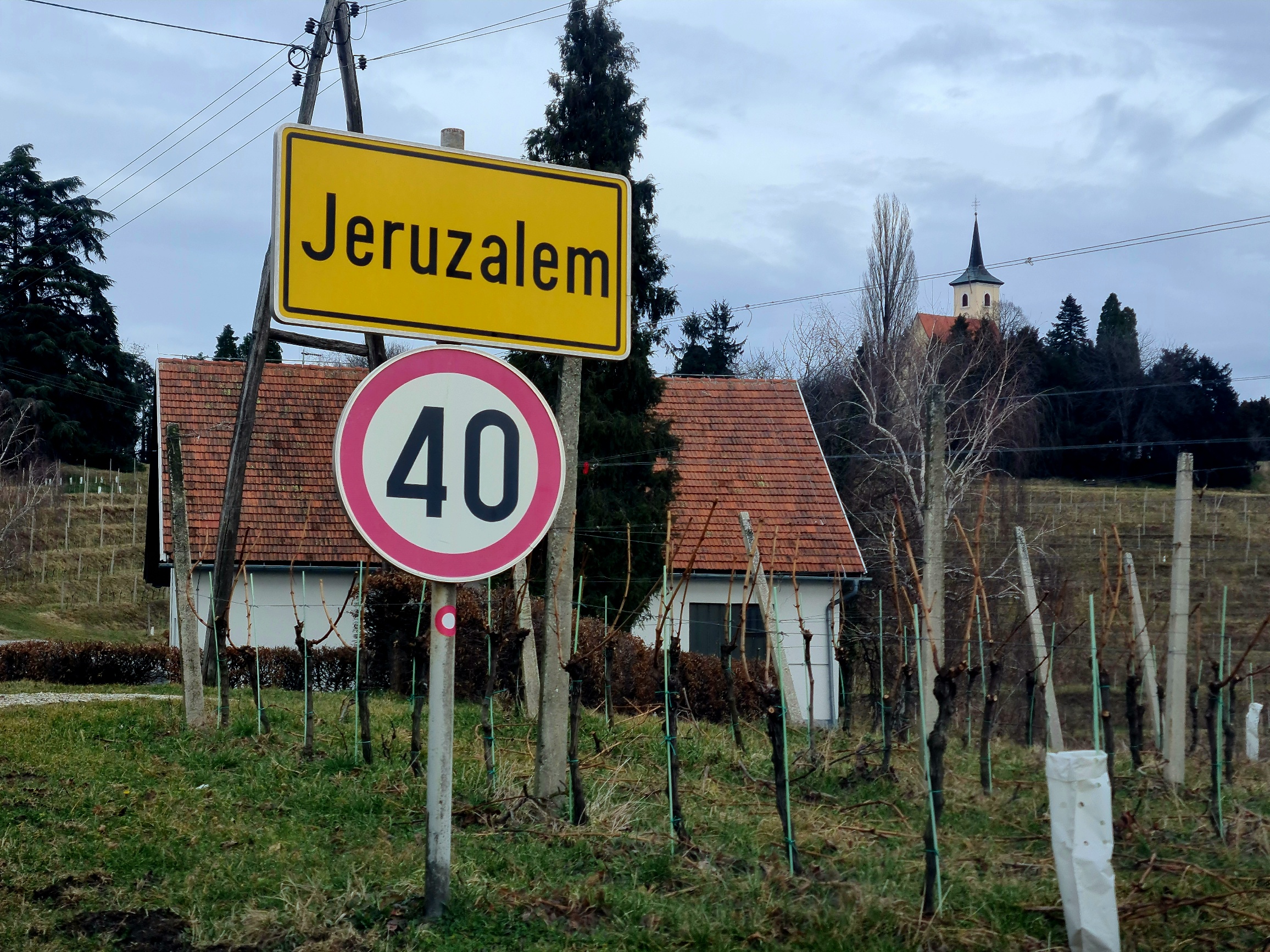As the story goes, Crusaders, on their way to the Holy Land, stopped off in northeastern Slovenia, in a village on top of the highest hill in the area (341m). They had such a good time there that they decided to abandon all plans for pushing onwards. The wine, apparently, figured largely in their decision to stay. And the name, that’s one they thought up themselves as a nod to the old country: Jeruzalem.
The countryside in this part of the world imbues the word bucolic with a palpable sense of calm. Homesteads are not fenced in. Houses are plopped randomly. The painted beehives, something Slovenia is noted for, are like installations in a massive open-air art gallery.
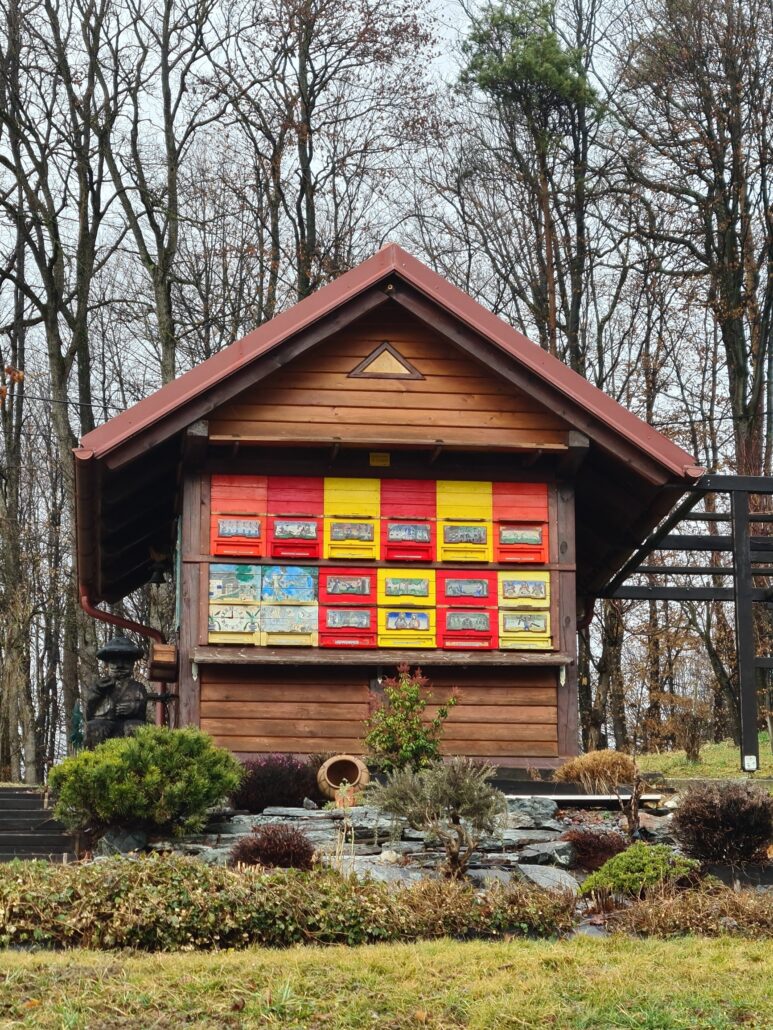
Slovenes, too, are fond of their roadside chapels (wayside shrines). They vary in size and shape and appear randomly alongside the road. For a country its size, it has a huge sacral space with over 3000 churches and shrines.
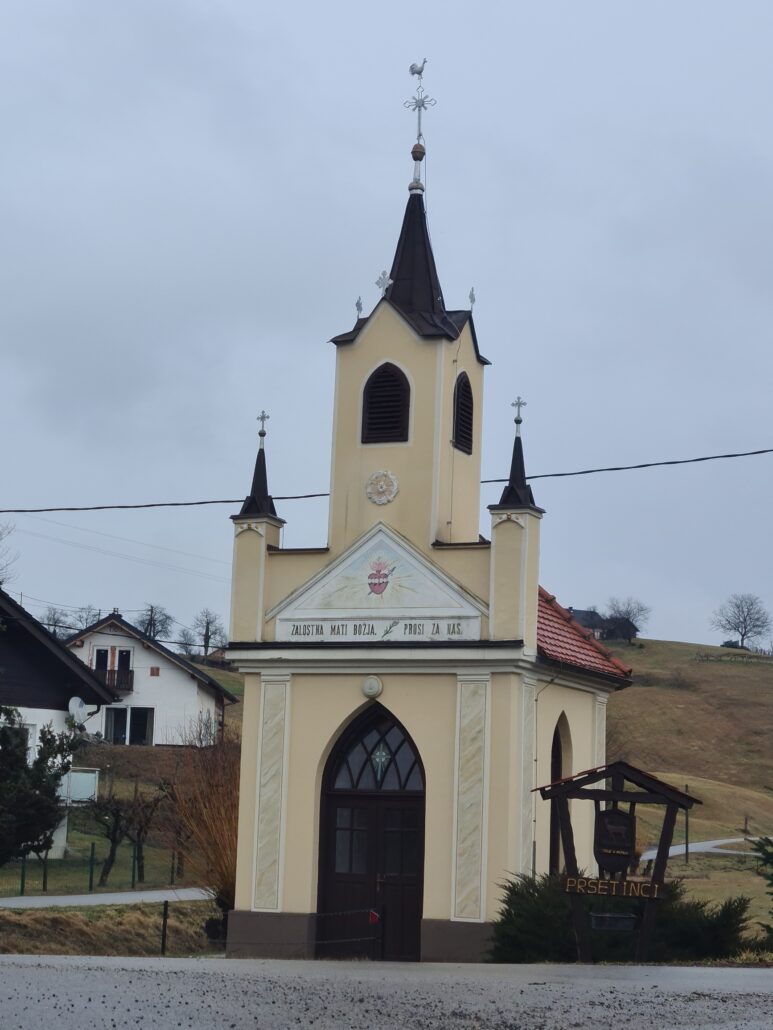
As we wound our way up hill and down vale, we caught the occasional glimpse of the church that the village was built around – The Church of Our Lady of Sorrows. It’s a pilgrimage site and sadly, even though it was a Sunday afternoon, it wasn’t open. It houses a painting of the Mother of Sorrows that the Crusaders are said to have brought with them directly from the other Jerusalem in or around the thirteenth century. The church itself dates to the 1600s so I wonder where it was kept in the intervening years. Who had charge of it?
I picked out my doer-upper. Another to add to my list of lotto buys.
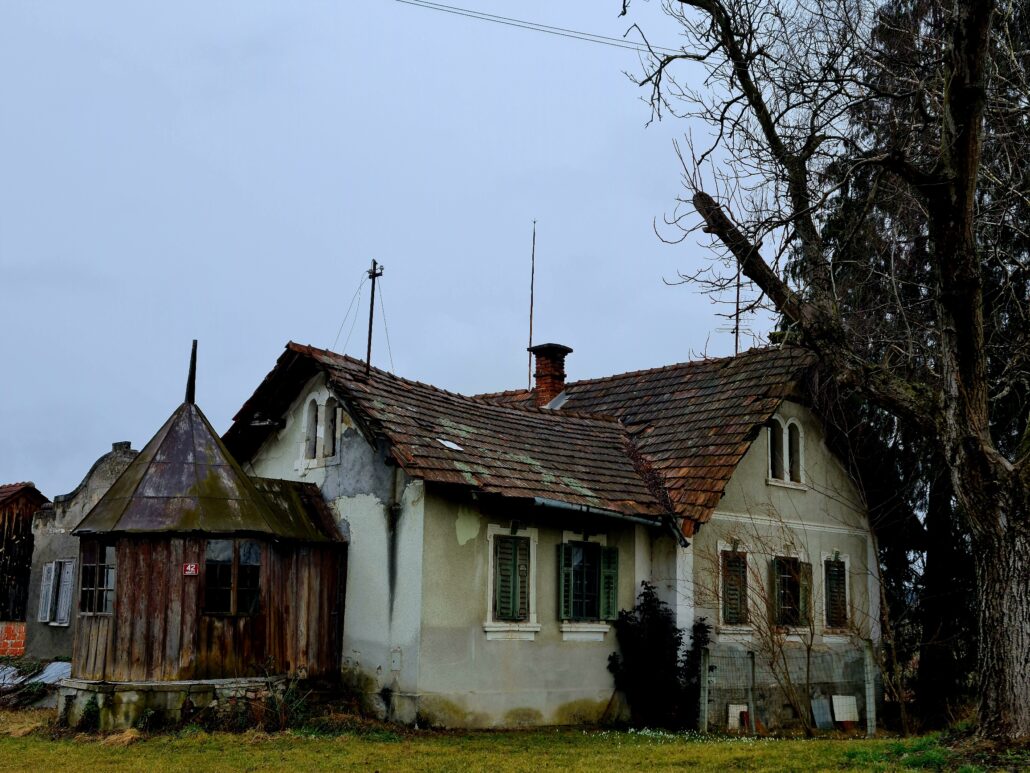
There’s a vastness about it all that was surprising. Slovenia isn’t a big country. It’s half the size of Switzerland and slightly smaller than the state of New Jersey. But out here, in the Jeruzalem hills, it seems huge.
Looking down, the hills roll away in steps or terraces.

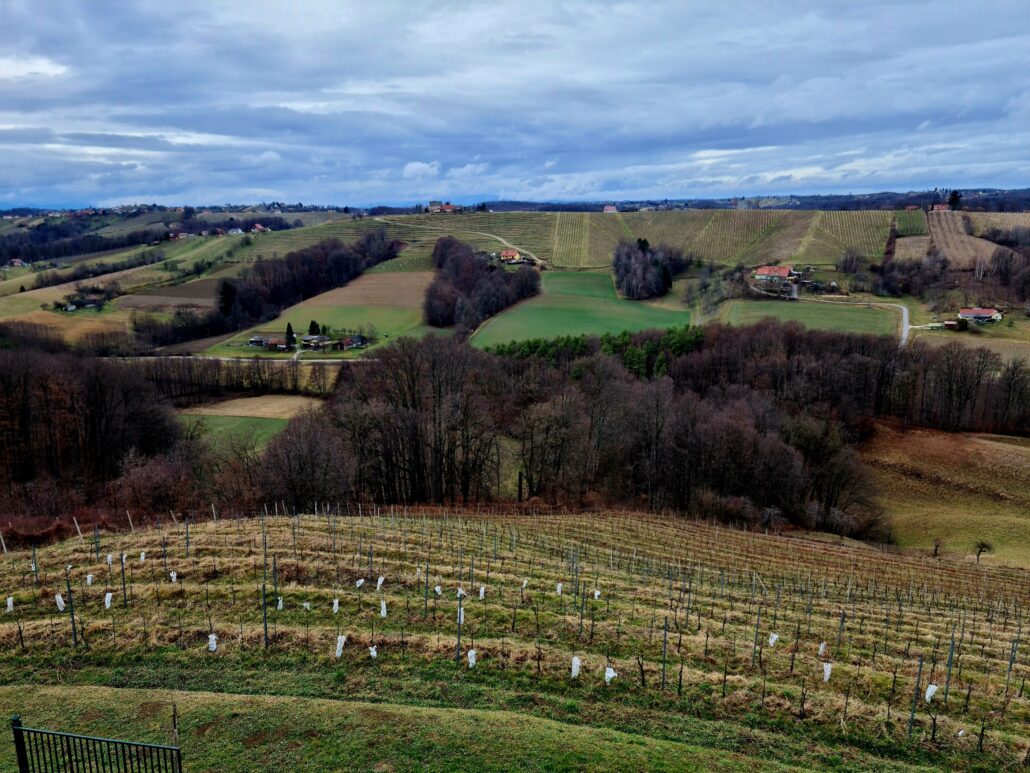
In the distances, the geometric lines fascinate.

We had the place to ourselves. But I can well imagine the roads being clogged with traffic on summer weekends when people drive the 40 km wine route, stopping here and there at local cellars to sample their wares.
The wine region is famous for its white wine, Šipon (Furmint). Years after the Crusaders came through, Napolean’s army dropped by. The ever-hospitable locals (Slovenes are very hospitable people) fed and watered them with food and wine. The soldiers liked it and their enthusiastic cries of ‘Cest bon’ were heard as ‘Šipon’, which as far as I know doesn’t translate to anything in English.

This curious house has some lovely artwork on the walls, one of a monk-like figure holding a glass of wine in one hand and a goose in the other. The second is a bearded man wearing a bishop’s mitre and holding a crozier. He’s also carrying a tray of grapes. I thought it might have been Pope Urban – hey, we’ve had the Crusaders and Napolean’s Army so why not? – but Urban usually has a sword. Despite my hopes of something more interesting, the writing on the roof seems to be an advertisement for a tile manufacturer.
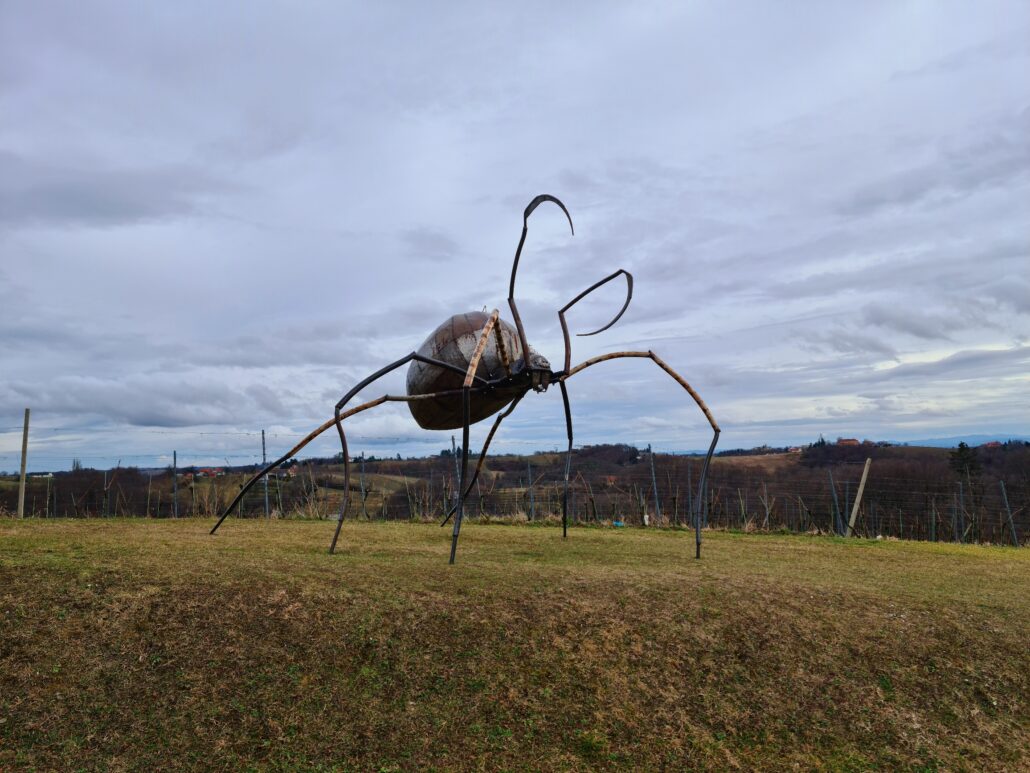
Looking for lunch, we made for Taverna Kupljen and its crazy ant-like iron sculpture. We didn’t have a reservation. Unsurprisingly, their main dining hall was full. But they fit us in upstairs. Not quite as atmospheric but it was on us for not being prepared. We should have learned from Maribor. Sunday lunch is a big thing in this part of the world. The food was delicious. Tasty enough for me to make enquiries about coming back and staying overnight.
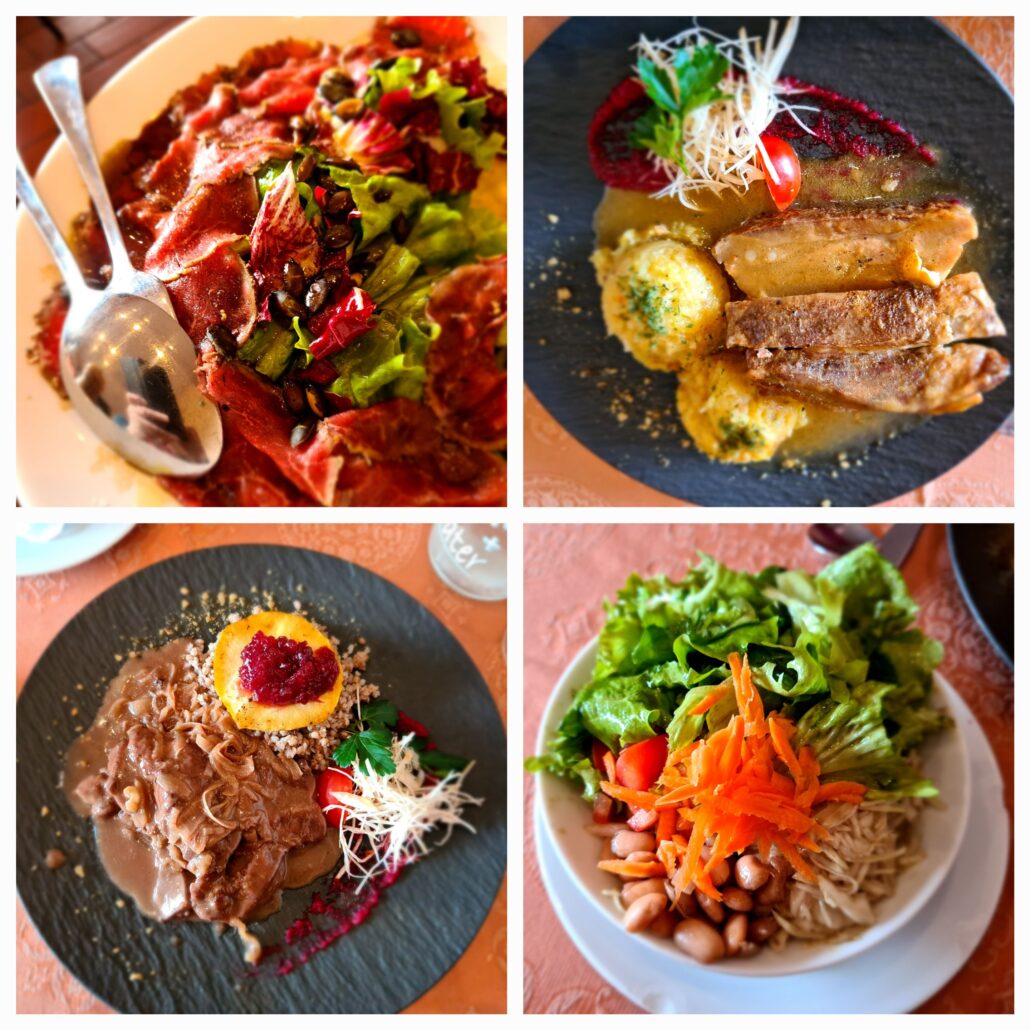
Views from the terrace are all-encompassing. On a clear day, they say, you can see Varaždin in Croatia, southern Austria, western Hungary, the Pohorje Mountains, and the Pannonian Lowlands. And from the top of the hill in Jeruzalem, weather permitting, you can see Hungary’s Lake Balaton.
It is a magical part of the world. As a country, I’m drawn to it. In my book of fairytales, it’s my fairytale land. And given that it’s practically next door, it’s somewhere I plan to see a lot of this year.
Notes for next time
- Check the opening times of the church
- Stop in Hermanci at the top of the hill Strmec after August to see the klopotec (wind rattle) – or on August 15 when it goes up …
- Visit the Malek Vineyard cottage
- Go back to Kupljen for the Advent tree – On the first Sunday in Advent a unique Christmas/Wine tree is set up on the patio. The cast iron tree stands more than 2 m tall and has 570 knobs for decorations; by New Year’s Eve, guests will have decorated all 570 knobs with Kupljen wine bottles – emptied, of course.

